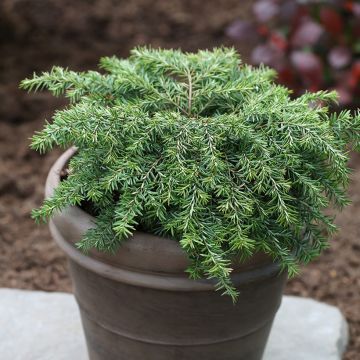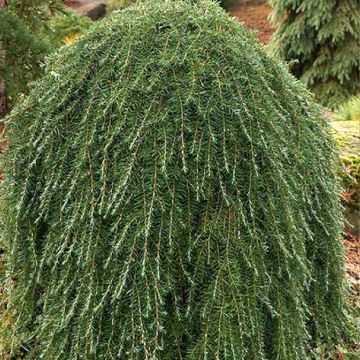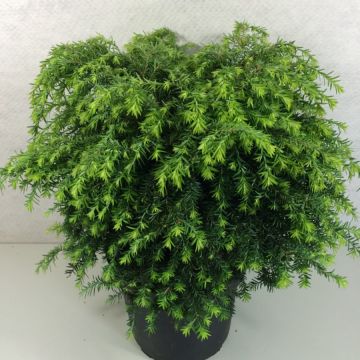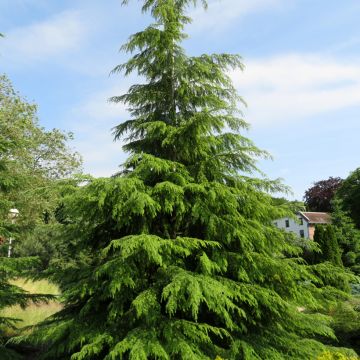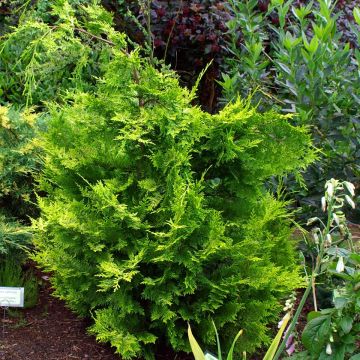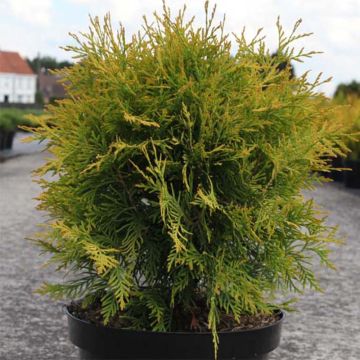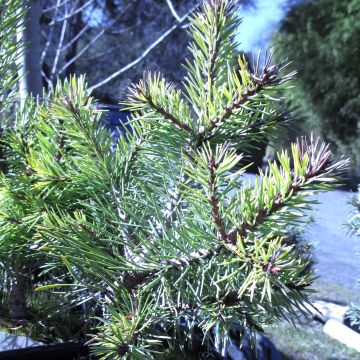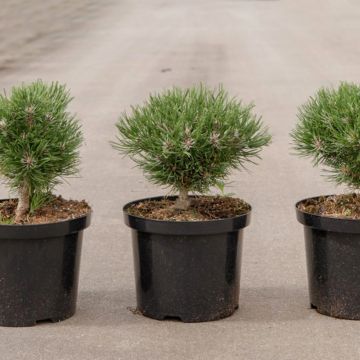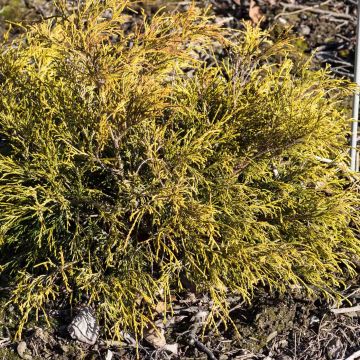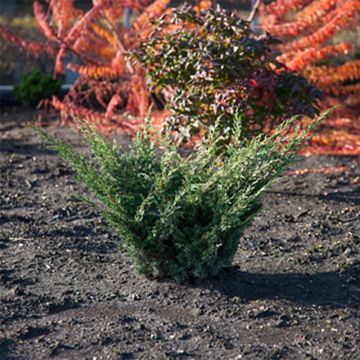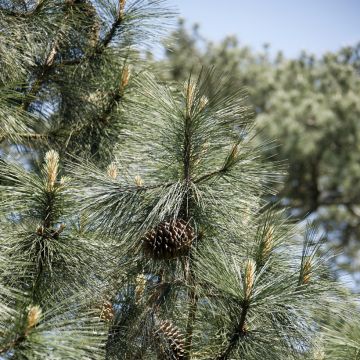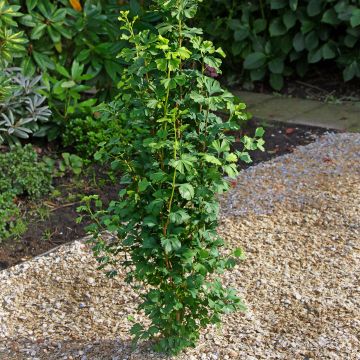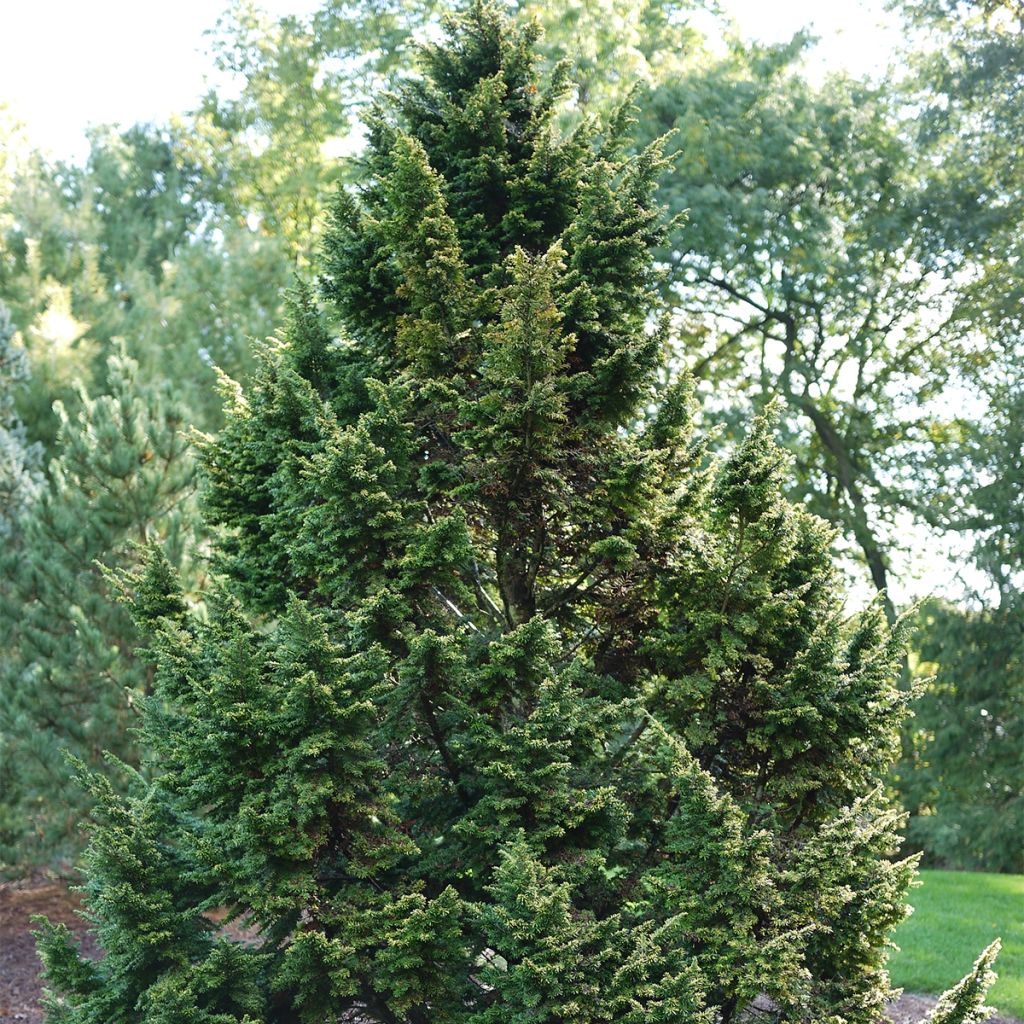

Tsuga canadensis - Eastern Hemlock
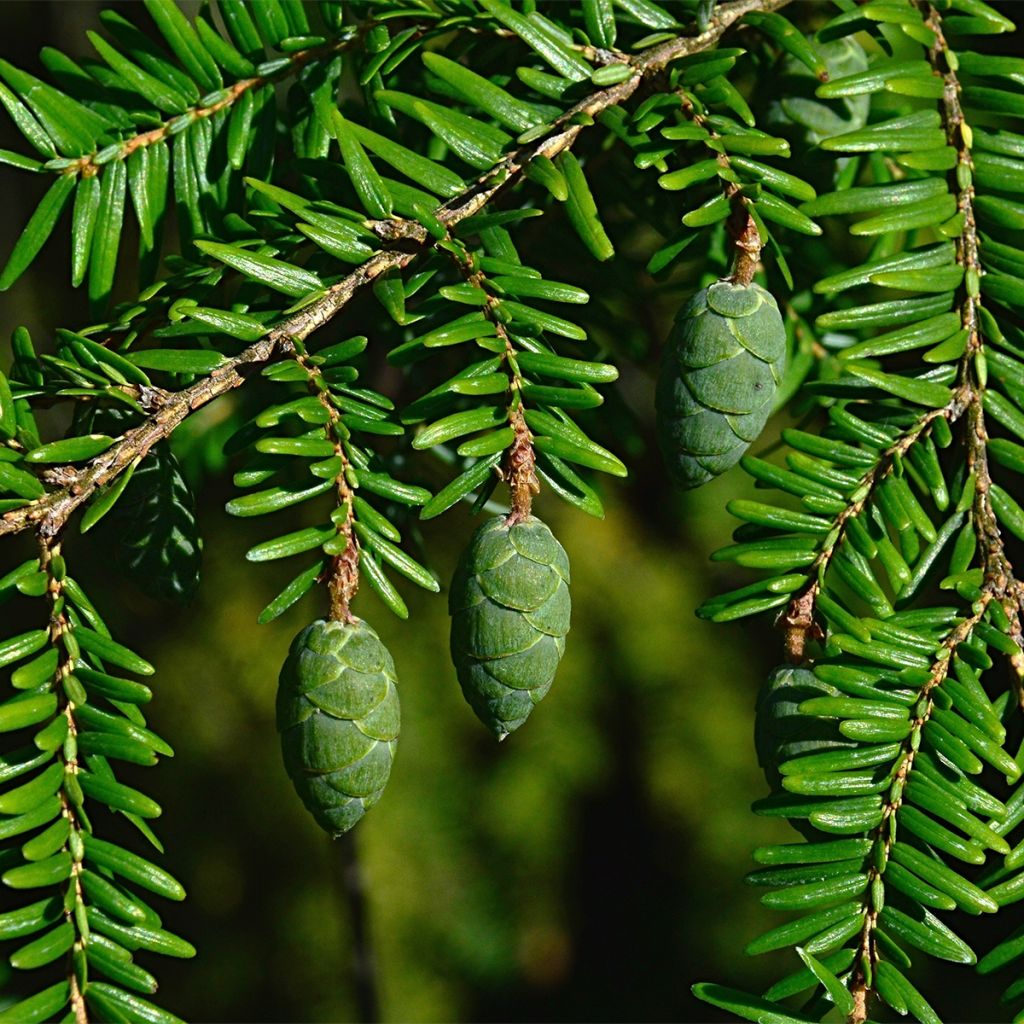

Tsuga canadensis - Eastern Hemlock
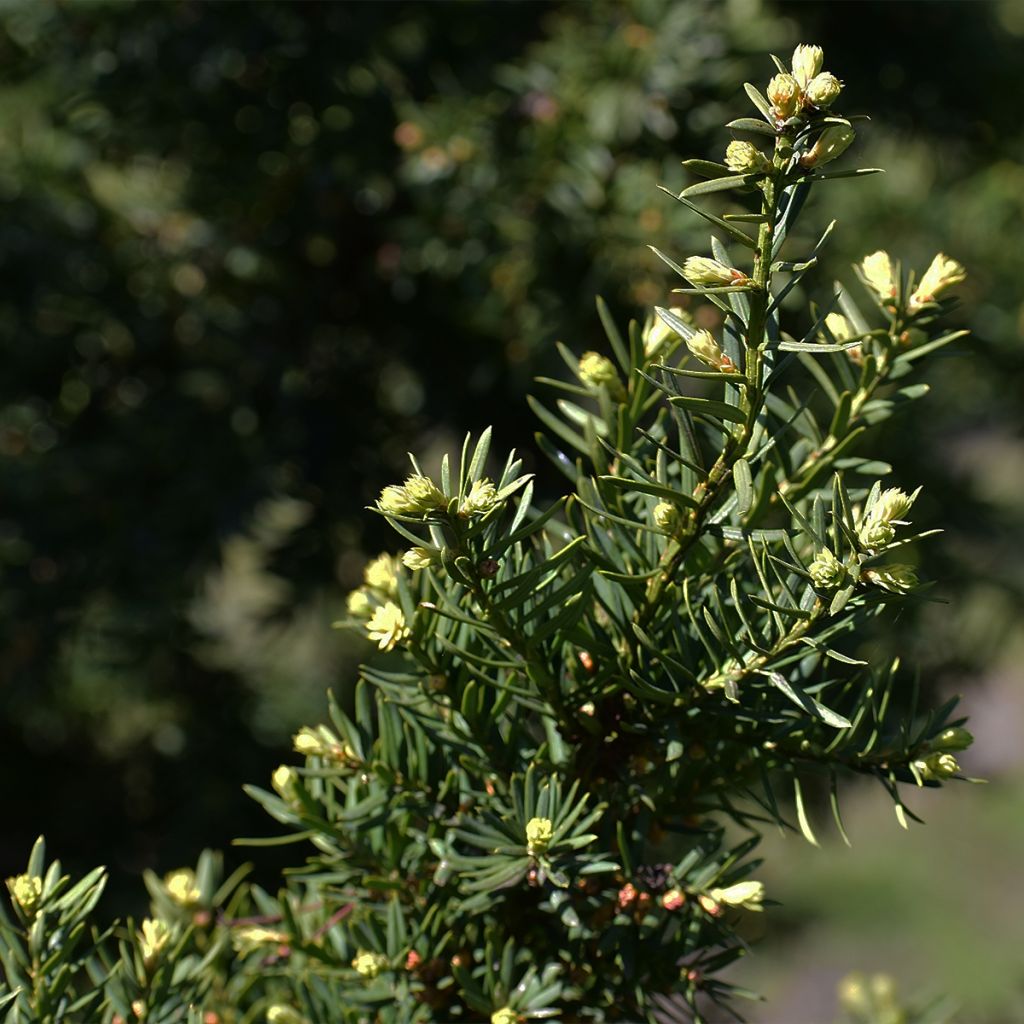

Tsuga canadensis - Eastern Hemlock
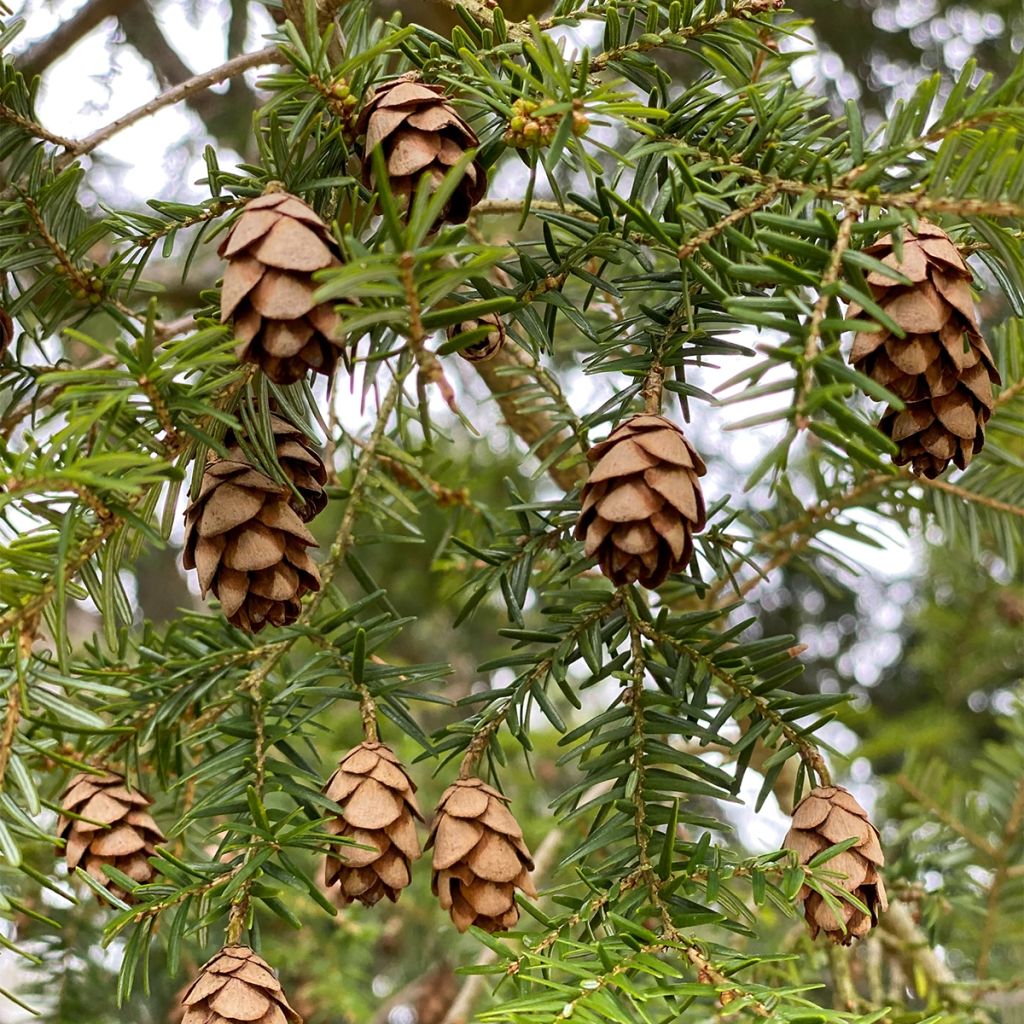

Tsuga canadensis - Eastern Hemlock
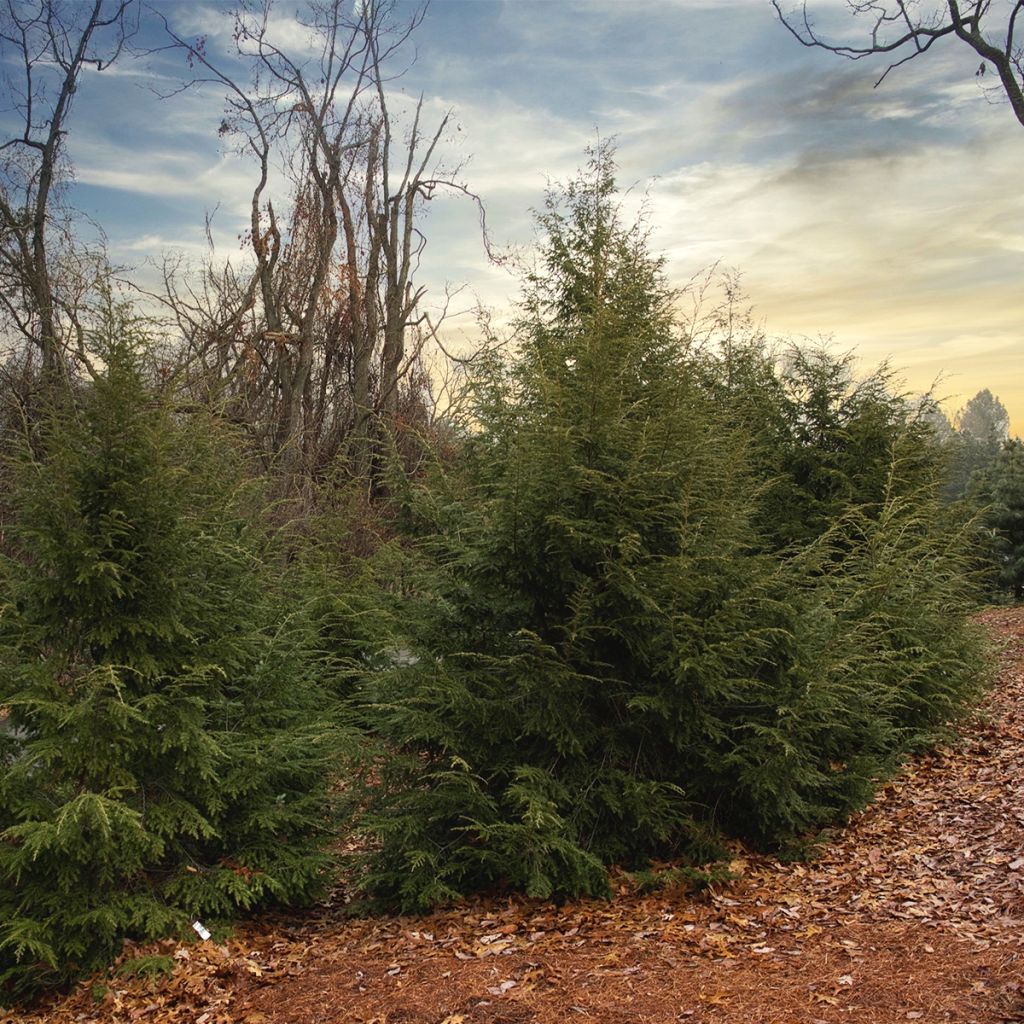

Tsuga canadensis - Eastern Hemlock
Tsuga canadensis - Eastern Hemlock
Tsuga canadensis
Eastern Hemlock, Canadian Hemlock, Eastern hemlock-spruce
This item cannot be shipped to the selected country
Delivery charge from €5.90
More information
Schedule delivery date,
and select date in basket
This plant carries a 24 months recovery warranty
More information
We guarantee the quality of our plants for a full growing cycle, and will replace at our expense any plant that fails to recover under normal climatic and planting conditions.
From €5.90 for pickup delivery and €6.90 for home delivery
Express home delivery from €8.90.
Does this plant fit my garden?
Set up your Plantfit profile →
Description
Tsuga canadensis, also known as the Canadian hemlock or Eastern hemlock, is a slow-growing conifer that can reach large dimensions over time. Its habit is pyramidal to conical and its foliage, ranging from medium green to dark green, is slightly glossy. This imposing tree is therefore best planted in large gardens or parks, as a standalone specimen. It has specific requirements for its living conditions, being sensitive to drought, wind, and urban pollution. Additionally, it does not tolerate strong sunlight and requires neutral to acidic soil. It is a forest species that will interest knowledgeable enthusiasts.
Tsuga canadensis is an evergreen conifer of the Pinaceae family, native to eastern Canada and the United States, where it often grows in mixed forests and maple groves, always in shade. This species slowly reaches a height of 30m (98ft) with a width of 8 to 10m (26 to 33ft), with a trunk diameter of 1m (3ft), and can live for 600 years. It is a very hardy conifer that prefers fertile and moist soils and cannot tolerate drought or direct sunlight. Its roots are shallow and spread out, making it susceptible to wind.
This is a typical forest species that belongs in large parks and gardens. It grows slowly, with a distinctly pyramidal habit in its early stages, which can then evolve into a more spreading conical shape. The long branches start at right angles to the trunk, and as they are quite flexible, their tips hang down, giving it a typical silhouette. The foliage consists of small needles that are 2.5cm (1in) long and 1.5cm (1in) wide. Two bands of light grey to white stomata adorn the underside of the leaves. During bud break, the needles are light green and darken afterwards. The bark of the tree starts as orange-brown and turns brown-black. Flowering occurs in May, but it is quite insignificant, with small yellow-green flowers of about 4mm (1in) going unnoticed among the foliage. They are followed by small, brown, pendulous cones of about 2cm (1in) in length. In our climate, this species reaches approximately 25m (82ft) in height at maturity, with a width of about 8m (26ft). The tree is extremely hardy (beyond -30°C (-22°F)).
Reserved for large spaces and cold climates, Tsuga canadensis will form beautiful specimens when planted in isolation, provided it is given the required climatic and soil conditions. In sufficiently moist soil, it can also be planted with Nyssa sylvatica, whose fantastic reddish-orange autumn colours will be enhanced by the contrast with the dark green of Tsuga. The Virginia tulip tree (Liriodendron tulipifera), another tall tree with beautiful autumn foliage, yellow this time, will complete this trio. A smaller tree, Cercidiphyllum japonicum, the caramel tree, will enrich this group of deciduous trees with interesting and decorative foliage in autumn, leaving the winter to Tsuga canadensis to occupy the scenery with its evergreen branches.
Report an error about the product description
Tsuga canadensis - Eastern Hemlock in pictures
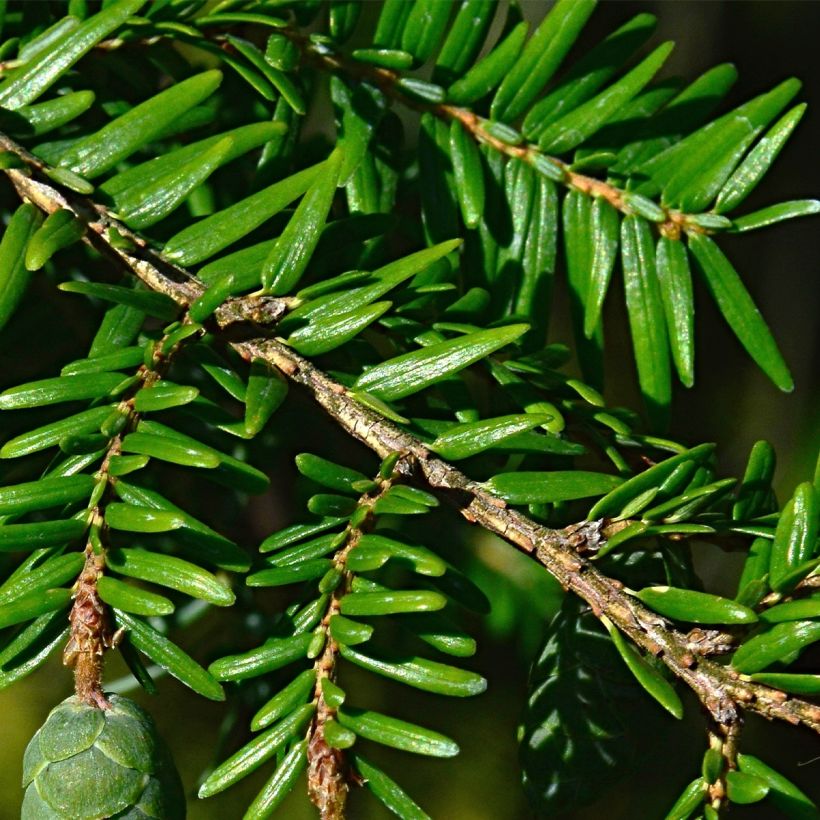

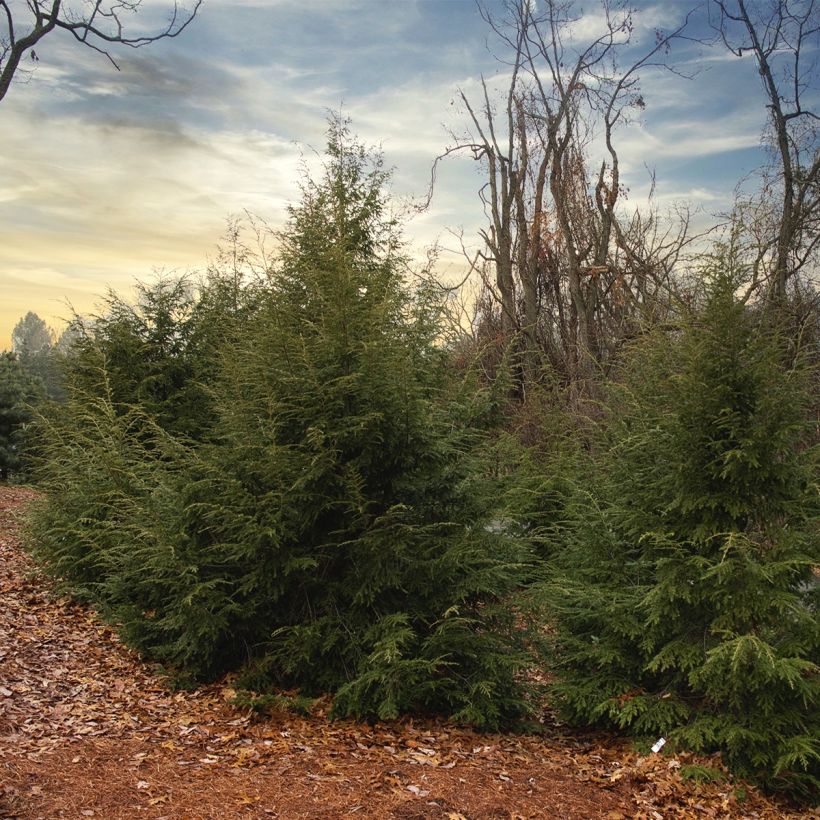

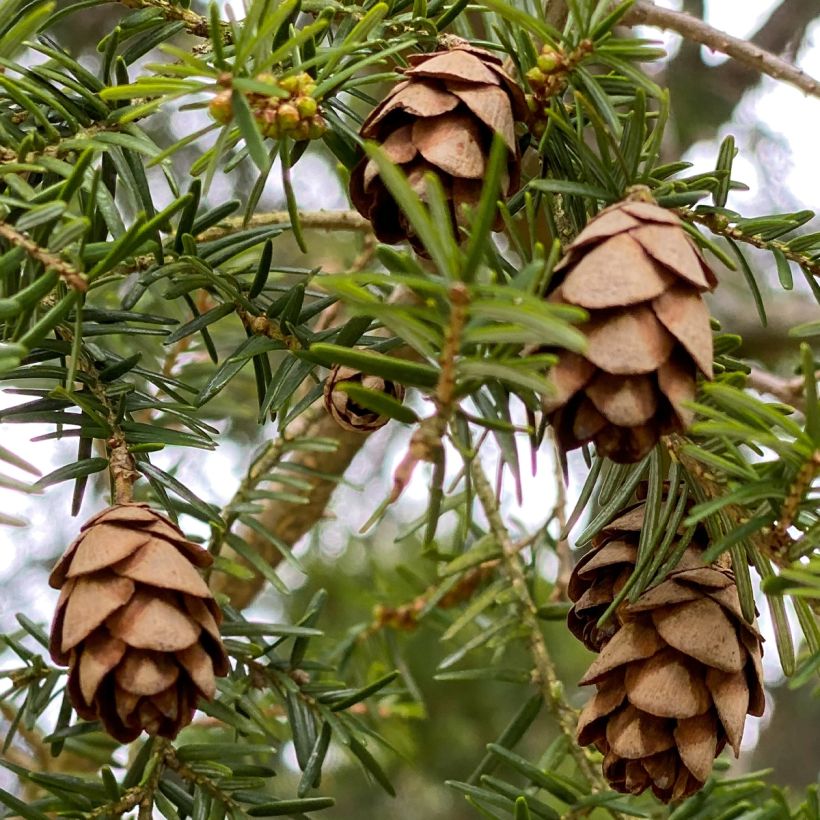

Plant habit
Foliage
Botanical data
Tsuga
canadensis
Pinaceae
Eastern Hemlock, Canadian Hemlock, Eastern hemlock-spruce
Cultivar or hybrid
Other Tsuga
Planting and care
Plant from September to November and from February to April in fertile, moist but well-drained soil, that is neutral to slightly acidic (tolerated pH range of 5 to 7, this tree does not like limestone). It prefers humus-rich or loamy-clayey, moist, acidic soils. Choose a sunny or semi-shaded location sheltered from strong winds that could uproot it, as its roots are shallow. Soak the root ball in a bucket for twenty minutes before planting to thoroughly saturate it with water. Apply organic matter at planting and water generously for the first three years, and especially during prolonged drought. Apply a special conifer fertiliser every year in April and weed the soil in summer. This very hardy conifer (down to at least -30°C (-22°F)) fears scorching sun and heatwaves, as well as dry and poor soils.
Planting period
Intended location
Care
This item has not been reviewed yet - be the first to leave a review about it.
Conifers
Haven't found what you were looking for?
Hardiness is the lowest winter temperature a plant can endure without suffering serious damage or even dying. However, hardiness is affected by location (a sheltered area, such as a patio), protection (winter cover) and soil type (hardiness is improved by well-drained soil).

Photo Sharing Terms & Conditions
In order to encourage gardeners to interact and share their experiences, Promesse de fleurs offers various media enabling content to be uploaded onto its Site - in particular via the ‘Photo sharing’ module.
The User agrees to refrain from:
- Posting any content that is illegal, prejudicial, insulting, racist, inciteful to hatred, revisionist, contrary to public decency, that infringes on privacy or on the privacy rights of third parties, in particular the publicity rights of persons and goods, intellectual property rights, or the right to privacy.
- Submitting content on behalf of a third party;
- Impersonate the identity of a third party and/or publish any personal information about a third party;
In general, the User undertakes to refrain from any unethical behaviour.
All Content (in particular text, comments, files, images, photos, videos, creative works, etc.), which may be subject to property or intellectual property rights, image or other private rights, shall remain the property of the User, subject to the limited rights granted by the terms of the licence granted by Promesse de fleurs as stated below. Users are at liberty to publish or not to publish such Content on the Site, notably via the ‘Photo Sharing’ facility, and accept that this Content shall be made public and freely accessible, notably on the Internet.
Users further acknowledge, undertake to have ,and guarantee that they hold all necessary rights and permissions to publish such material on the Site, in particular with regard to the legislation in force pertaining to any privacy, property, intellectual property, image, or contractual rights, or rights of any other nature. By publishing such Content on the Site, Users acknowledge accepting full liability as publishers of the Content within the meaning of the law, and grant Promesse de fleurs, free of charge, an inclusive, worldwide licence for the said Content for the entire duration of its publication, including all reproduction, representation, up/downloading, displaying, performing, transmission, and storage rights.
Users also grant permission for their name to be linked to the Content and accept that this link may not always be made available.
By engaging in posting material, Users consent to their Content becoming automatically accessible on the Internet, in particular on other sites and/or blogs and/or web pages of the Promesse de fleurs site, including in particular social pages and the Promesse de fleurs catalogue.
Users may secure the removal of entrusted content free of charge by issuing a simple request via our contact form.
The flowering period indicated on our website applies to countries and regions located in USDA zone 8 (France, the United Kingdom, Ireland, the Netherlands, etc.)
It will vary according to where you live:
- In zones 9 to 10 (Italy, Spain, Greece, etc.), flowering will occur about 2 to 4 weeks earlier.
- In zones 6 to 7 (Germany, Poland, Slovenia, and lower mountainous regions), flowering will be delayed by 2 to 3 weeks.
- In zone 5 (Central Europe, Scandinavia), blooming will be delayed by 3 to 5 weeks.
In temperate climates, pruning of spring-flowering shrubs (forsythia, spireas, etc.) should be done just after flowering.
Pruning of summer-flowering shrubs (Indian Lilac, Perovskia, etc.) can be done in winter or spring.
In cold regions as well as with frost-sensitive plants, avoid pruning too early when severe frosts may still occur.
The planting period indicated on our website applies to countries and regions located in USDA zone 8 (France, United Kingdom, Ireland, Netherlands).
It will vary according to where you live:
- In Mediterranean zones (Marseille, Madrid, Milan, etc.), autumn and winter are the best planting periods.
- In continental zones (Strasbourg, Munich, Vienna, etc.), delay planting by 2 to 3 weeks in spring and bring it forward by 2 to 4 weeks in autumn.
- In mountainous regions (the Alps, Pyrenees, Carpathians, etc.), it is best to plant in late spring (May-June) or late summer (August-September).
The harvesting period indicated on our website applies to countries and regions in USDA zone 8 (France, England, Ireland, the Netherlands).
In colder areas (Scandinavia, Poland, Austria...) fruit and vegetable harvests are likely to be delayed by 3-4 weeks.
In warmer areas (Italy, Spain, Greece, etc.), harvesting will probably take place earlier, depending on weather conditions.
The sowing periods indicated on our website apply to countries and regions within USDA Zone 8 (France, UK, Ireland, Netherlands).
In colder areas (Scandinavia, Poland, Austria...), delay any outdoor sowing by 3-4 weeks, or sow under glass.
In warmer climes (Italy, Spain, Greece, etc.), bring outdoor sowing forward by a few weeks.

































